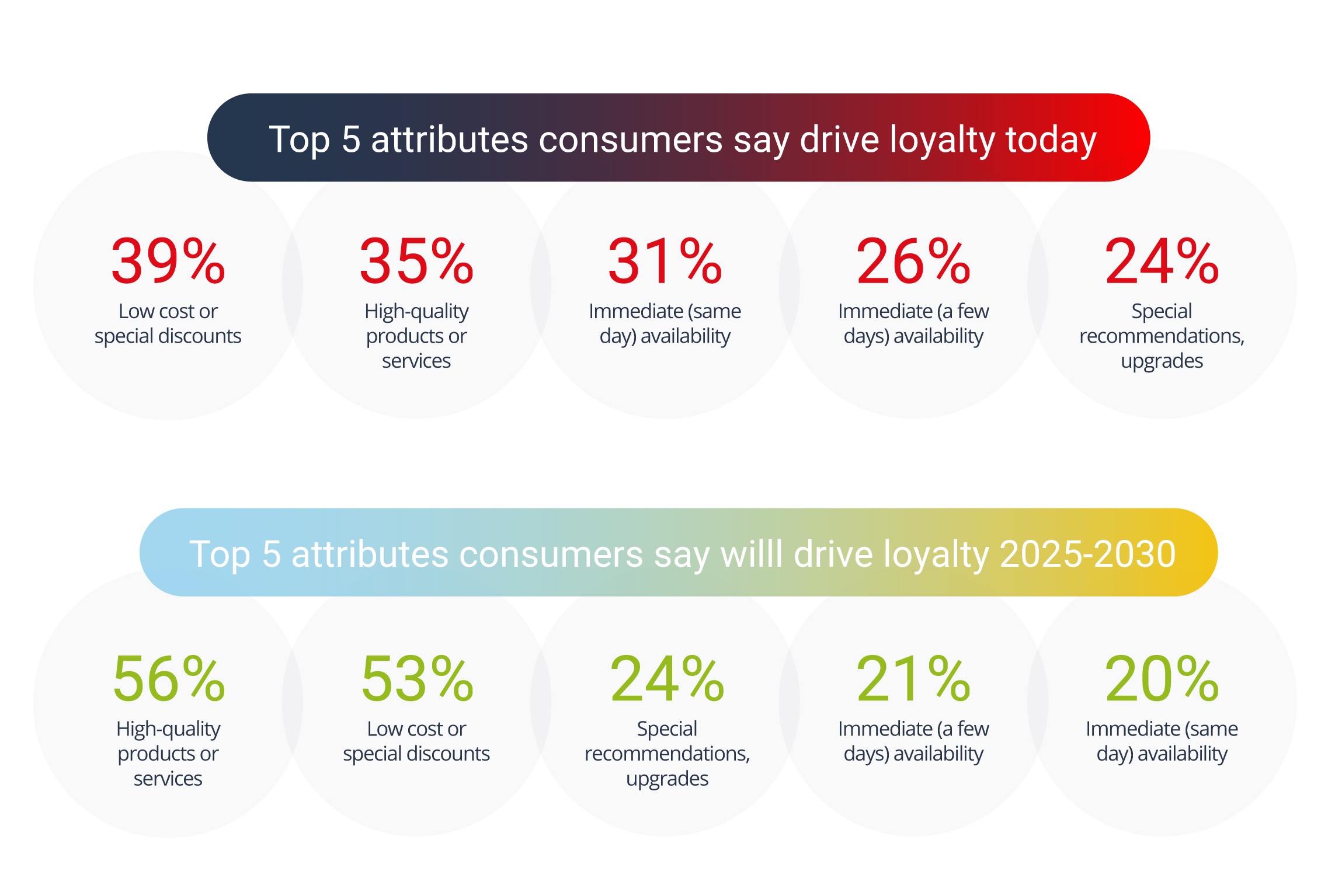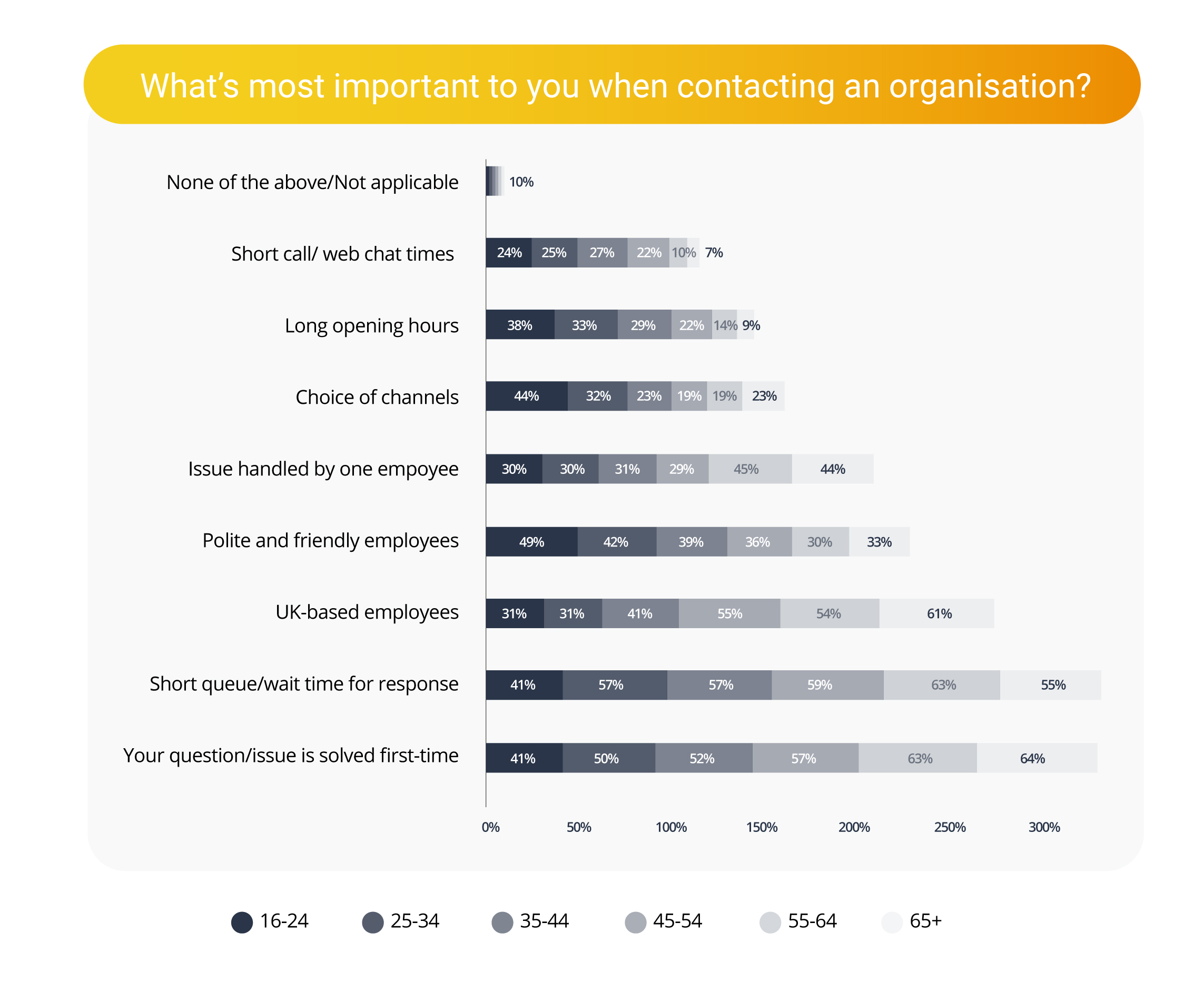How customers’ evolving preferences will create the future of CX
Thu, September 14, 2023

As we’ve seen over the last three and a half years, everything can change dramatically with almost no warning.
While we all hope the next few years are a little calmer, it’s perhaps a good time to ask what major factors will influence customers’ preferences and behaviours over the rest of this decade. Assuming nothing too leftfield like another pandemic or other global catastrophe happens, we can certainly identify some of the most significant issues.
“Consumers are more picky, with higher expectations.”
Socio-economic pressures have led consumers to be more picky. Improvements in technology and experiences with digital and start-up services – think Amazon, Uber, and the like – have led consumers to raise their expectations of all the organisations they deal with. This trend will continue.
As they make an ever-increasing proportion of the adult population, the younger digital native generations will also drive businesses to look for new ways to serve them. Innovations such as AI, automation, and personalisation also become self-propelling as consumers start to expect these once they’ve experienced them a few times.
Socio-economic factors
The fallout from the COVID pandemic and other global events is still felt worldwide. Most economies – including the UK – are dealing with rising inflation, rising interest rates, and a real-terms decline in wages. It is no wonder most consumers feel less secure than they did a few years ago.
The World Bank is suggesting we might be at the start of a ‘lost decade’ of economic growth with high interest rates, high inflation, and lower-than-usual growth.
This is not just due to the pandemic. Back in 2013, a Which? study identified and predicted all these traits, concluding that “consumers in 2030 will be living in a world where slow growth, resource scarcity and rising commodity prices will have become the norm.”
When times get harder, consumers generally look to optimise the value of their purchases. This could also include reducing their spending entirely – which is already happening according to the UK Office of National Statistics. Even if spending does return to normal levels, it is likely that customers will remain more discerning and more likely to stick to brands they know and trust.
“Customers are more likely to stick to brands they know and trust.”
Many consumers, and not just younger ones, are also increasingly concerned with sustainability and the environment. They take a greater interest in the ethics of the companies they do business with. A study by the Harvard Business Review, for example, found that products marketed as sustainable grew 5.6 times faster than those that weren’t.
While most of those issues are strategic or product-related, there are many factors related to the customer experience that need to be addressed.
Drivers of customer loyalty
According to a recent CMO survey, 48% of consumers think brands need to do a better job at delivering the right CX. The same study asked consumers about the main factors driving loyalty today. Perhaps reflecting today’s economic conditions, they said cost and discounts were their priority, followed by quality and availability.
Asked to imagine what factors would be most important to them in the future, quality ran out the winner when they were asked to think long-term. Cost was second, and special recommendations / upgrades were third, highlighting that personalisation is becoming an increasingly important factor for customers.
“Quality, cost and ease of access will drive loyalty.”
The data strongly suggests that the quality of a product and the ease of engaging with a brand will be the ultimate determinants of customer loyalty by 2030. As consumers become accustomed to personalised experiences, the brands that prioritise convenience and remove obstacles will rise to the top. On the other hand, those brands that fail to adapt, and which make it challenging for customers to interact, will struggle to stay relevant.

CX metrics in the future
For its Exceeding Customer Expectations 2023/24 report, ContactBabel surveyed over 1,000 UK consumers and asked them what was most important to them when contacting an organisation. As we might expect, the two most important factors were first contact resolution and short wait time.
Whether it’s a question, complaint or order, modern customers expect quick responses. The digital native generations, particularly millennials and Gen Z, drive this even further by demanding real-time engagement with brands online. To meet these expectations effectively, businesses must invest in customer support infrastructure and technology to ensure round-the-clock availability (hint: it doesn’t have to be 100% human).
Looking at the ContactBabel survey responses when they are split by age underscores this point dramatically. It becomes clear that the successive generations have quite different priorities.

The preferences of the 16 to 24 age group can give us a good indication of what customers’ priorities will be in the future when this cohort, along with their younger Generation Alpha successors, make up a greater proportion of the consumer market.
The top priorities for this age group were polite and friendly employees and choice of channels. They care far less about being answered by a UK-based employee. First-contact resolution and short wait times are also less of a priority for them, and neither do they expect their issues to be handled by just a single employee.
“Younger generations value politeness and choice over speed of response – but don’t waste their time!”
What they do want are longer opening hours and shorter interaction times – significantly so compared to the older age groups. Longer opening hours suggest they want to be able to contact a business at a time of their choosing. Their preference for shorter interaction times, coupled with the lower importance they place on time to answer, could be linked to younger generations’ preference for digital, non-voice channels that are usually asynchronous.
Channels such as email, SMS, web chat, messaging, and social media are, by their very nature, essentially open 24/7. These channels also require less time from the customer as they don’t have to hang about on hold waiting for a response or waiting for the agent to look up information once they are connected.
The impact of technology
For many customers today, mobile devices are the sole technology they use to access services online - a compelling reason for brands to take a mobile-first approach. However, smartphones are not the only devices businesses need to be concerned with.
The CMO indicates that by 2030, 4 in 5 consumers expect to use intelligent assistants like Siri or Alexa for online purchases or managing smart home devices. Forward-looking brands should invest in these voice-based systems now, as they present an opportunity to get into the living rooms and kitchens of next-generation households. By recommending products, supplying information proactively, and collecting behavioural data, these platforms can drive highly personalised experiences. AR (augmented reality) and VR (virtual reality) devices are also expected to be much more heavily adopted by the end of the decade, enabling brands to offer entirely new types of experiences.
In our omnichannel era, customers engage fluidly across websites, apps, in-store and, of course, through the contact centre. They expect unified, seamless experiences regardless of the touchpoint. An omnichannel approach is no longer just best practice - it’s a prerequisite for meeting rising customer expectations. Brands must adopt technologies and strategies to connect experiences across environments.
“81% of consumers expect to use chatbots for customer service by 2030.”
AI-powered chatbots and automation are also quickly transforming customer service. By efficiently handling high-volume, routine queries, bots enable instant 24/7 responses. This improves operational efficiency as well as the customer experience. Currently, 36% of consumers use chatbots for support, rising to a projected 81% by 2030.
Automation has limitations. Complex issues requiring emotional intelligence, nuanced understanding, and human judgment remain beyond advanced AI’s capabilities at this point. This is why human agents maintain integral roles in customer service. Critical skills like empathy and compassion transform complex interactions into positive brand impressions, fostering trust.
Looking towards 2030, brands must have mobile-first, omnichannel strategies backed by automation and insight provided by both humans and AI. Customers expect instant, personalised experiences across environments. Meeting their evolving demands will require blending digital efficiency and insights from data with human emotional intelligence.
The future of customer engagement is digital, automated, data-driven – and human.

Whitepaper
Harnessing the Power of AI in Contact CentresA recent survey suggests that 75% of contact centre are looking to invest in AI to improve CX over the next 18 months.

Whitepaper
Advanced Customer Experience TechnologiesFrom the cloud to AI, how to use the latest customer contact technologies to improve your customer relationships
More on Future Technologies in CX
- What CX Technology Might Look Like in 10 Years
- Is it really possible to predict customer behaviour?
- What is Conversational Analytics and Why is It So Powerful for Transforming Your CX?
- How to Use ChatGPT to Enhance Customer Experience and Customer Service
- How to Build a Modern Contact Centre
- The Agent of the Future: Evolving Careers in Contact Centres


